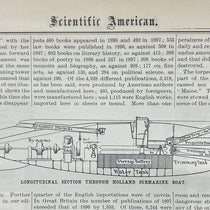Scientist of the Day - Georges Lemaître
Georges Henri Joseph Édouard Lemaître, a Belgian mathematician, astronomer, and priest, died June 20, 1966, at the age of 71. Lemaître was a brilliant mathematician; he studied at Louvain, Cambridge, and Harvard, his studies interrupted by the First World War, when he served in the army for four years. In 1923, he became a priest, and began teaching at the Catholic University of Louvain. He also secured a second PhD from MIT.
Lemaître was intrigued by the general theory of relativity, as proposed by Albert Einstein in 1917, which introduces the idea of space-time and provides a new theory of gravitation. Einstein’s equations of general relativity yield several solutions. Einstein provided one, which described a universe filled with matter but was static – it did not change over time. This came to be called Solution A. A Dutch cosmologist, Willem de Sitter, showed that there were other solutions to Einstein’s equations, in particular one in which the universe contains no matter (or approximately no matter) at all. De Sitter called this Solution B. It too described a static universe. But de Sitter pointed out that, were one to introduce matter into that universe, it would not stay still, but would move outward, producing a kind of expansion.
Lemaître was more aware than either Einstein or de Sitter of the real universe, the one that astronomers observe, and he knew that the American astronomer Vesto Slipher had measured the redshifts for a score or so of spiral nebulae and had found that the light from nearly all of them exhibited a redshift, which could be a relativistic effect, or could be the result of the spirals moving away from us. Lemaître also knew that Edwin Hubble was determining the distance to the spirals (which after 1925 were known to be galaxies), and that the more distant ones seemed to have the higher redshifts.
In consequence, Lemaître published a paper in 1927 called: "Un Univers homogène de masse constante et de rayon croissant rendant compte de la vitesse radiale des nébuleuses extra-galactiques" (translation coming right up). It was published in a journal that was not widely read by astronomers and cosmologists, the Annales de la Société Scientifique de Bruxelles. In it, Lemaître proposed a third solution to Einstein’s equations of general relativity, one in which the universe is expanding over time (it is never referred it as solution C, although that would seem the proper label). Four years later, the article was translated into English and published in the much more widely read journal, Monthly Notices of the Royal Astronomical Society, with the title: “A homogeneous universe of constant mass and increasing radius accounting for the radial velocity of extra-galactic nebulae".
The reason for the new interest in Lemaître’s paper is that, in 1929, Hubble had announced that there is a direct correlation between the distance of a spiral galaxy and its redshift, with the redshift increasing in a linear fashion as the distance of the galaxy increased. Hubble did not suggest that the increased redshift was caused by an increased velocity of recession, i.e., that the universe is expanding. But Lemaître had proposed exactly that in 1927, and when Arthur Eddington lamented in 1930 that we needed other solutions than A and B to the equations of general relativity, Lemaître wrote and reminded him that he had proposed a third solution and had sent Eddington the paper. Eddington finally read it, was impressed, showed it to de Sitter, who was also impressed, and so it was translated and published in English the next year. It was now of great interest to astronomers, although the idea of an expanding universe would be widely debated for the next three decades.
Also in 1931, Lemaître took a further step in a very short paper (just one column long), published in Nature called: "The beginning of the world from the point of view of quantum theory.” Here he suggested that perhaps the entire universe that we see was once embodied in a single atom, which existed at a place and time before there was space and time. He called it the “initial quantum” in this notice; he would later refer to it as the “Primeval Atom” (indeed he would publish an entire book titled L’hypothese de l’atome primitif in 1946). His idea was that the Primeval Atom radioactively disintegrated over time, producing more and more (and smaller and smaller) atoms, as the universe expanded. He did not propose a “Big Bang”, but the idea of an explosive disintegration does come to mind from his idea. Many scholars now maintain that the Big Bang theory, proposed by George Gamow and colleagues in 1948, had its origin in Lemaître’s thought-piece of 1931.
The relationship that Hubble discovered between distances and redshifts of galactic objects came to be known as Hubble’s Law. Although Hubble did not initially commit to the idea that the redshifts measure velocities of recession, other astronomers did, and Hubble’s Law soon came to be written in term of recessional velocities rather than redshifts. The name belies the fact that it was Lemaître, not Hubble, who first proposed that the universe is expanding. Accordingly, in 2018, the International Astronomical Union approved a motion to change the term “Hubble’s Law” to the “Hubble–Lemaître Law”. We shall have to wait and see whether the authors of textbooks will pay any attention to the change.
In 1933, Einstein and Lemaître both visited the Mount Wilson Observatory (where Milton Humason was busy measuring the distances of extra-galactic objects for Hubble). Several photographs were taken; we have used the one less often reproduced (first image; you can see the other one here).
In addition to having nearly all of Lemaître’s many journal articles in our collections, we also have the first edition of L’hypothese de l’atome primitive (1946), and its subsequent edition in English, The Primeval Atom (1950).










